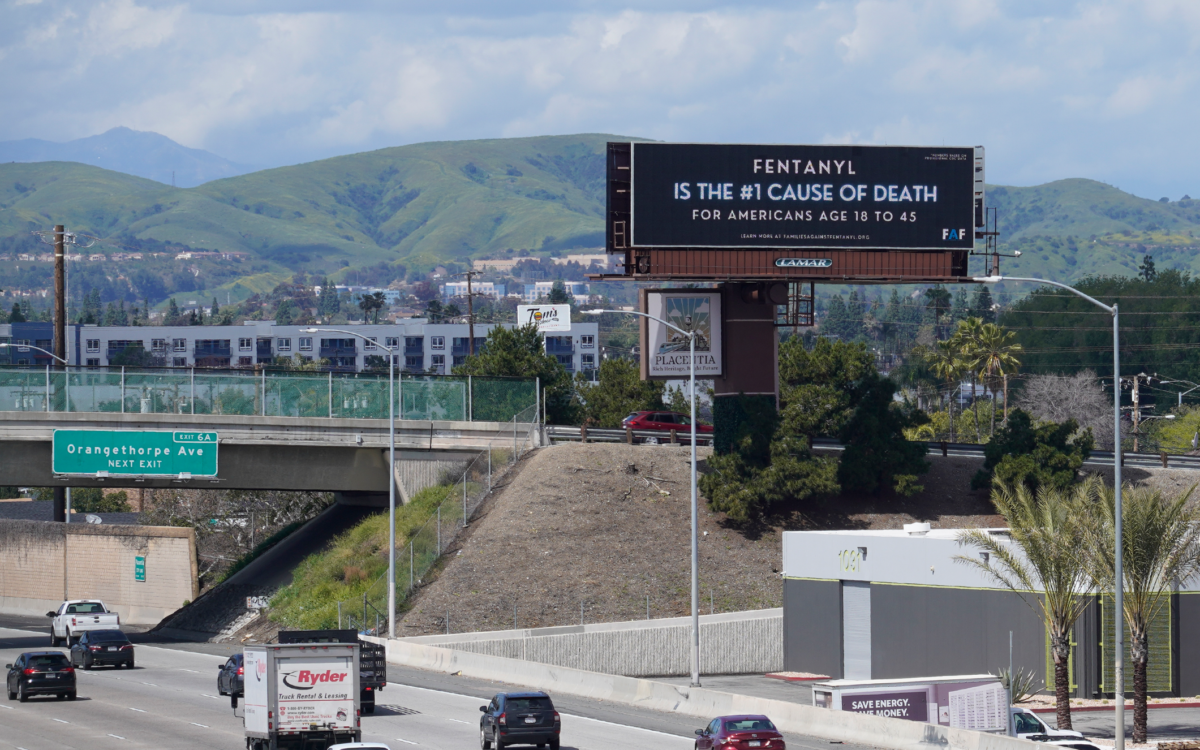Zach Didier, a senior at Whitney High School in Rocklin, was a straight-A student, athlete, star of his school musical and Eagle Scout. Two nights after Christmas 2020, he took what he thought was a Percoset that he bought through Snapchat, an out-of-character move for a student with no history of drug use.
The pill contained the opioid fentanyl, and by the time Zach’s father found him the next morning, the 17-year-old was dead.

Now Zach’s parents are among those pushing for legislation requiring drug education and naloxone in California’s public schools, in order to stem the soaring number of young people dying of fentanyl overdoses.
In 2021, more than 800 Californians under age 25 died of fentanyl poisoning – an 18-fold increase from five years ago. Fentanyl accounted for 1 in 5 deaths of California young people ages 15-24 in 2021.
“I firmly believe that if Zach had been aware of fentanyl and other fake pills he would have made a different choice,” Zach’s mother, Laura Didier, said in a recent interview with EdSource. “It’s incredibly important for every kid and every parent to understand what’s out there.”
A slew of new bipartisan bills seeks to address this. Most would stock public schools with naloxone, a nasal spray that can reverse an opioid overdose. But one bill goes a step further by requiring schools to offer drug education – something that’s part of California’s K-12 health education standards but is currently not required, and often not taught at all.
Senate Bill 10, introduced by Sen. Dave Cortese, D-San Jose, would create a working group to draw up opioid education materials for students in grades 7-12 and their parents. It would also require school site councils — groups of parents, teachers and administrators who oversee campus improvements and safety measures — to include drug education in safety plans.
Lastly, SB10 encourages schools to refer students who use drugs to counseling and treatment, instead of discipline or law enforcement.
Cortese said he decided to broaden his bill beyond naloxone during another Senate hearing on fentanyl last year. Listening to parents’ testimony about their children’s deaths made him realize that naloxone is not enough. To really address the fentanyl crisis, legislation would have to include a comprehensive approach to the problem: education for students, staff and parents, and counseling and treatment — instead of discipline — for students who are already struggling with drug use.
“It’s beyond tragic, how readily illicit drugs move around the community,” Cortese said. “And the lack of accountability and awareness is a tragedy within a tragedy. … We can’t let another session go by without addressing it.”
Although it doesn’t require drug education, the California Department of Education has been strongly encouraging schools to teach it. The state includes drug, alcohol and tobacco education in its K-12 health standards, and lately, state Superintendent of Public Instruction Tony Thurmond has been urging schools to stock naloxone and take other steps to protect students from fentanyl and other dangerous drugs.
Education is “a critical piece” of any effort to curb adolescent drug use and save young people from overdoses, said Maryjane Puffer, executive director of the Los Angeles Trust for Children’s Health, which operates health clinics in 19 middle and high schools in Los Angeles Unified.
Ideally, drug education in schools should not be limited to a single health class or assembly, she said. It should include after-school programs and other places students congregate, and be presented by students themselves. Students are far more likely to listen to their peers than well-meaning adults, she noted.
It should also include parents, who often aren’t aware of the risks associated with street drugs. Schools should offer materials as well as town-hall events on weekends and in the evenings, when parents can attend.
“When fentanyl deaths started happening, students were terrified. It’s killing their peers,” Puffer said. “They’ve already suffered during COVID — now this. It’s time for adults to step up and be protective and get this legislation passed.”
For Jack Rojas, a senior at Garfield High School in East Los Angeles, the reality hit when he saw a TV news report about a girl in Hollywood who died of a fentanyl overdose at her school. The girl, 15-year-old Melanie Ramos, had purchased what she thought was a Percoset (oxycodone and acetaminophen) at a nearby park.
“I was shocked. I had never seen anything like that. She had her whole life ahead of her,” Rojas said.
The incident inspired him to work on a presentation for his school on fentanyl — what it is, how it affects the body, why it’s so dangerous. It also prompted him to support SB10 and other efforts to increase drug education in schools.
“We hear about fentanyl, but we’re not really informed about what it is,” he said. “Students want to stay away from it, but they need more information.”
Melanie’s death also inspired Cortese to author SB10, dubbing it “Melanie’s Law.” Her family has testified on behalf of the bill in Sacramento and has been outspoken proponents of fentanyl education in schools.

Charlie Ternan, a student at the University of Santa Clara, actually did know about the risks of drugs and alcohol. He was in a fraternity, had two older siblings and had talked many times about the dangers with his parents. He knew about the risks of addiction, but he didn’t know about fake pills, his father, Ed Ternan said.
So on May 14, 2020, three weeks before he was slated to graduate, he had no reason to doubt that the pill he took for back pain was, in fact, a Percocet. It wasn’t. His friends found him dead in his bedroom a few hours later. He was 22.
Charlie’s parents now run a nonprofit that promotes fentanyl education for adolescents via social media. They’re also working on a fentanyl awareness website for the California Department of Public Health aimed at parents.
Naloxone is helpful, Ed Ternan said, but any meaningful effort at curbing fentanyl deaths must include education.
“Narcan is a last-ditch effort to save someone. It’s not a solution,” he said, noting that relatively few fentanyl overdoses occur on school campuses. “Young people urgently need to know what’s going on. No hyperbole, no scare tactics, no judgment. Just give them the information, so they’re empowered to make their own decisions.”
The nature of fentanyl and fake pills has changed the drug landscape, and schools need to quickly adapt, he said. Drug education is often focused on the risks associated with addiction and long-term use, when fentanyl can be fatal with just one pill.
“We used to understand drugs as a potential ‘pathway’ to addiction,” Ternan said. “But now, there is no pathway — it’s a minefield. The risk has changed from eventual death to immediate death. … It’s extremely urgent that young people understand this.”
In Rocklin, Zach Didier had recently been accepted to UCLA and was excited about his future. Like Charlie, he had talked to his parents about the risks of drugs and alcohol and was not a regular drug user. His mother doesn’t know why he chose to buy a pill online, except perhaps he was bored or anxious about college choices.
Regardless, she’s convinced he never would have taken the pill had he known the risks.
“My son did not know what was going on with fentanyl in our community, and I didn’t know to warn him,” she said. “Nobody should think, ‘This can’t happen to my kid.’ That’s why this is so urgent. We can’t wait any longer.”
